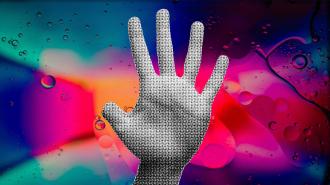Texas A&M researchers are rewriting the rules about what’s needed for mammals to regrow lost body parts — bringing human limb regeneration a step closer to reality.
The background: If a starfish loses an arm, it can regenerate a replacement. Same for many lizards and their tails. Mice can often regrow the tips of their paws.
But adult humans can only regrow skin, most of their liver, and not much else — if you lose an arm or even a finger, a new one isn’t going to sprout forth in its place.
Scientists believed mammal limb regeneration required nerves and growth factors.
It’d be a lot cooler if it could, though, so people have been studying superstar regenerators like the starfish and salamander for more than two centuries, looking for clues as to how we might be able to spur human limb regeneration.
Based on that research, scientists believed a mammal couldn’t regenerate a body part unless two things were present in the area where it would grow: molecules called “growth factors” and nerves.
Researchers in the lab of Texas A&M professor Ken Muneoka have recently published two papers that are changing the rules.
What’s new? One of the papers, published in November 2021, found that there is another critical element to limb regeneration.
It turns out that mice will lose their ability to regenerate their digit tips if they couldn’t walk on the affected limb, suggesting that physical pressure and use plays a crucial role in mammal regeneration.
“Dolan [the study’s first author] found that when the limbs were suspended, even though they still had lots of nerves and could move around, they couldn’t actually put pressure on their limbs so the digit tips wouldn’t regenerate,” Muneoka said. “It just completely inhibited regeneration.”
“Absolutely nothing happens during the suspension,” he continued. “But once the load returns, there will be a couple weeks of delay, but then they’ll begin to regenerate.”
“What these two studies show counteracts the two-century-old dogma that you need nerves to regenerate.”
Ken Muneoka
The second paper, published in June 2022, found that one of the other supposedly essential elements for regeneration wasn’t necessary after all.
Mice can still regrow their digit tips even without any nerves in their affected digit — the process was just a bit slower. This suggests that nerves aren’t actually essential to mammal regeneration.
“What these two studies show counteracts the two-century-old dogma that you need nerves to regenerate,” Muneoka said. “What replaces it in mammals is that you need mechanical loading, not nerves.”
The big picture: These two studies aren’t going to suddenly make human limb regeneration possible, but they are rewriting the rulebook for regeneration.
Now that we know what is and isn’t necessary for regeneration in mammals, scientists are one step closer to mastering the process.
“Regeneration of a human limb may still be science fiction, but we know some facts about it, and now we know you have to have that mechanical load along with the growth factors,” said researcher Larry Suva. “That changes how future scientists and engineers are going to solve this problem.”
We’d love to hear from you! If you have a comment about this article or if you have a tip for a future Freethink story, please email us at tips@freethink.com.
